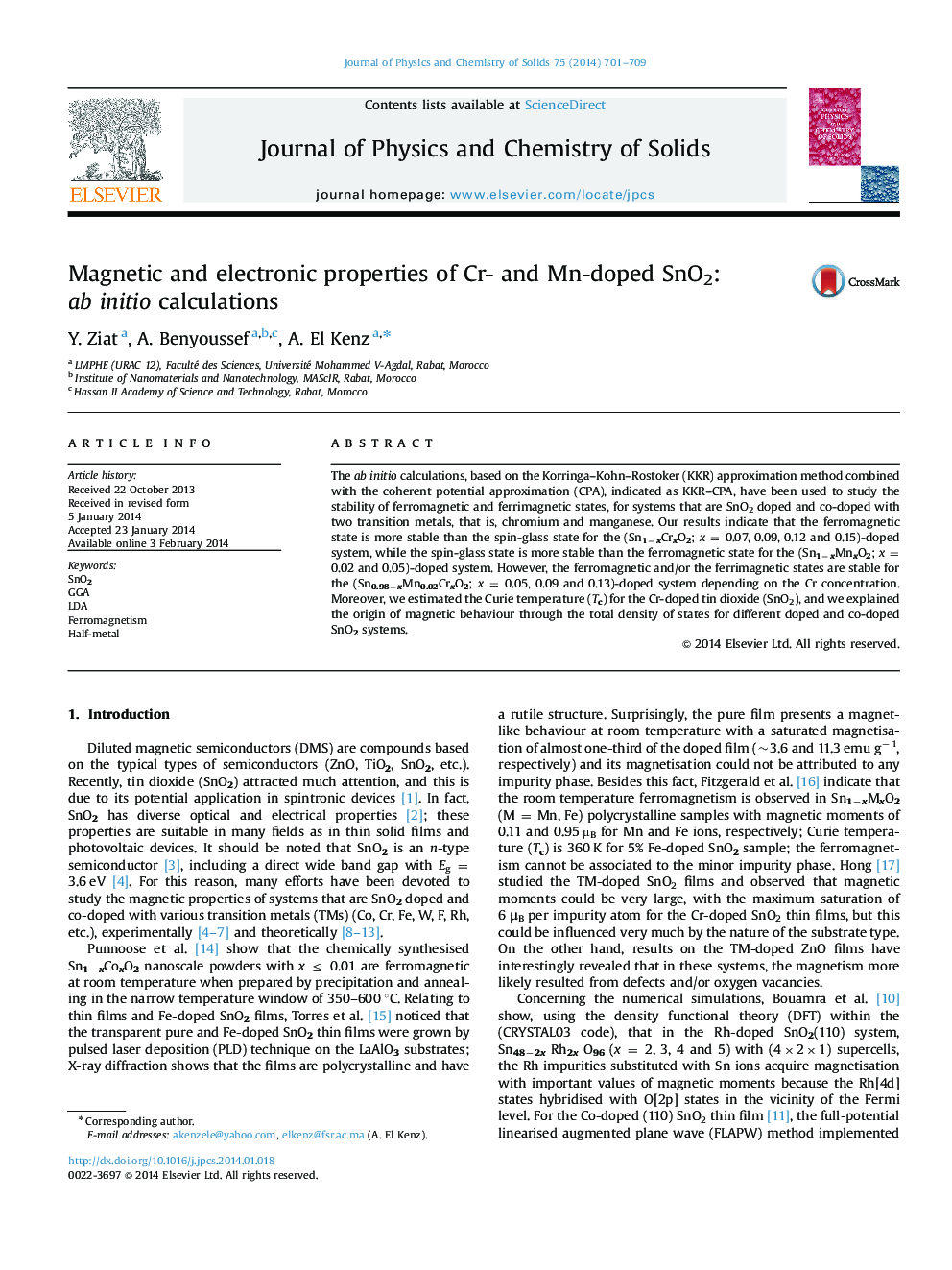| Article ID | Journal | Published Year | Pages | File Type |
|---|---|---|---|---|
| 1516032 | Journal of Physics and Chemistry of Solids | 2014 | 9 Pages |
Abstract
The ab initio calculations, based on the Korringa-Kohn-Rostoker (KKR) approximation method combined with the coherent potential approximation (CPA), indicated as KKR-CPA, have been used to study the stability of ferromagnetic and ferrimagnetic states, for systems that are SnO2 doped and co-doped with two transition metals, that is, chromium and manganese. Our results indicate that the ferromagnetic state is more stable than the spin-glass state for the (Sn1âxCrxO2; x = 0.07, 0.09, 0.12 and 0.15)-doped system, while the spin-glass state is more stable than the ferromagnetic state for the (Sn1âxMnxO2; x = 0.02 and 0.05)-doped system. However, the ferromagnetic and/or the ferrimagnetic states are stable for the (Sn0.98âxMn0.02CrxO2; x = 0.05, 0.09 and 0.13)-doped system depending on the Cr concentration. Moreover, we estimated the Curie temperature (Tc) for the Cr-doped tin dioxide (SnO2), and we explained the origin of magnetic behaviour through the total density of states for different doped and co-doped SnO2 systems.
Keywords
Related Topics
Physical Sciences and Engineering
Materials Science
Electronic, Optical and Magnetic Materials
Authors
Y. Ziat, A. Benyoussef, A. El Kenz,
